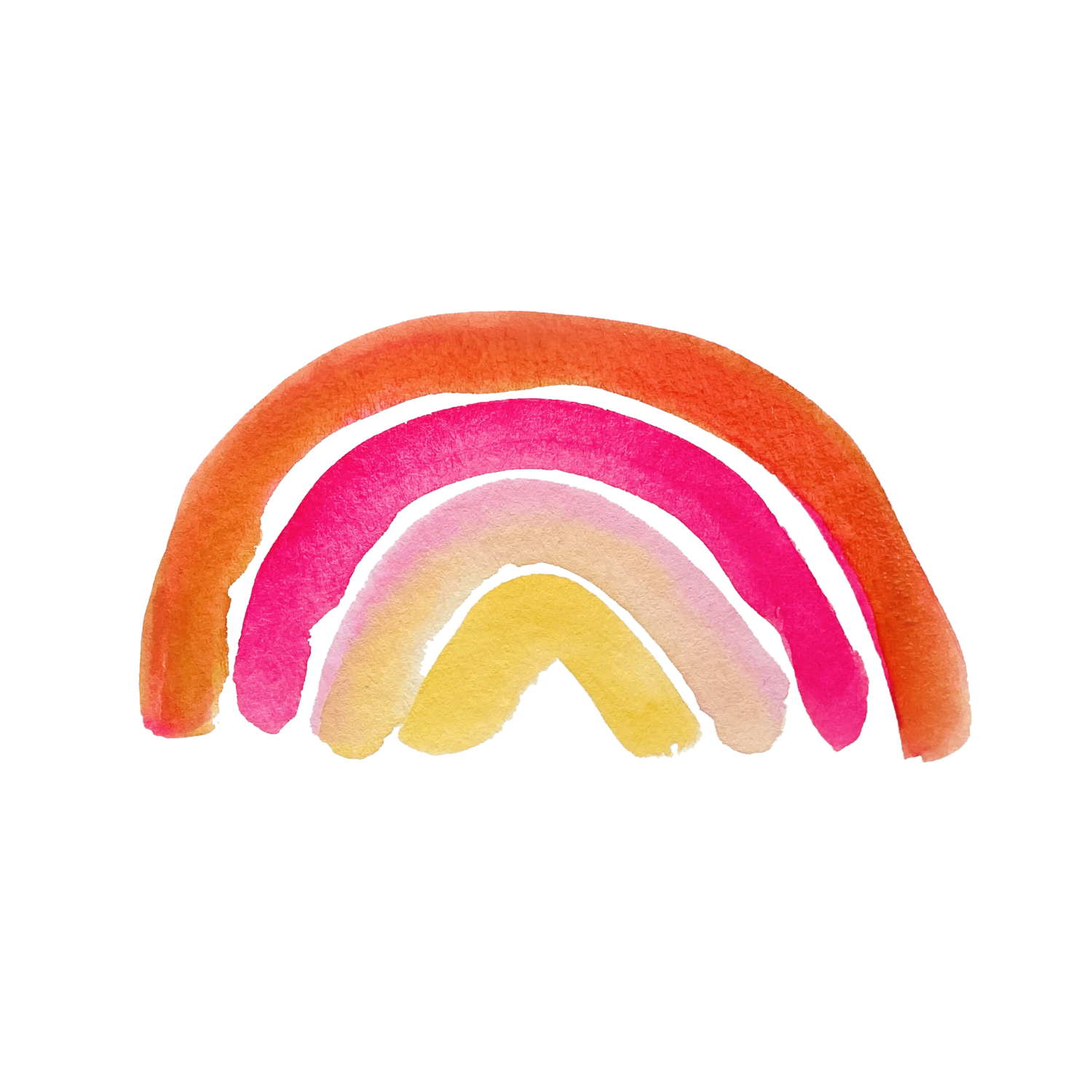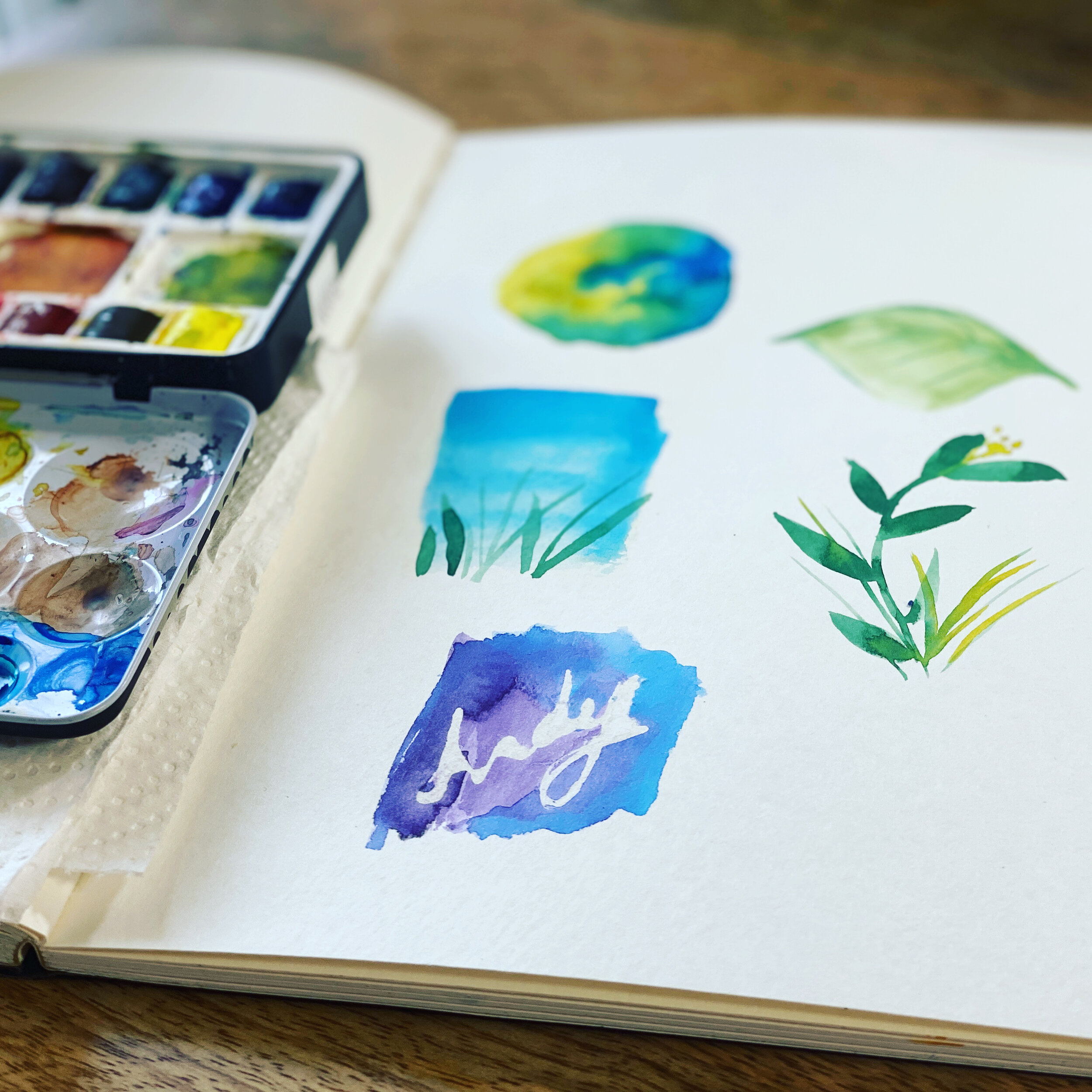A Simple Guide to Using Masking Fluid with Watercolors
What is masking fluid?
Masking fluid is made from liquid latex-based substance and is applied to areas of an artwork the artist wants to keep white. The fluid is latex suspended in ammonia. It dries hard on the paper or surface the artist puts it on. The masking fluid dries and then the artist can paint over areas of the painting without worrying about color saturating the paper. It preserves the shapes of objects in a painting so the painter does not have to worry about painting over them. Artists also like to leave masking fluid on a piece. Since masking fluid comes in different colors, some artists like to match the fluid color to the paper in case they decide to just leave the masking fluid on the page. See the tutorial below for a step by step on how to create this cute stationary card design with hand lettering and watercolors.
Why do artists use masking fluid?
Artist’s use masking fluid with watercolor painting when trying to preserve areas of a painting to keep white. This technique is useful when painting botanical artwork, because of the level of detail in the artwork. It can be challenging to keep all the small details with clean lines. Masking fluid makes this easier.
How to apply masking fluid
Get a Q-tip, squeezable bottle of masking fluid, or an old paint brush.
Apply the masking fluid to an area of the painting using any of these three.
I recommend getting an old paint brush or a bottle with a small tip so you don’t have to ruin your brushes. I hate using old paint brushes to apply masking fluid. It sticks to the brush and can ruin them completely. Many artists will tell you that you can just wash the brush, but I have found it creates a film on the paint brush. That’s why I provide a recommendation below for a brand I really like.
Depending on the brand it could take between 30-45 minutes to dry. Most masking fluids only take a few minutes to dry, but the l’aquarelle brand took 30 minutes.
Rub the masking fluid off with your hand or a soft towel/gum eraser
Wash your brushes immediately!!
Can you put masking fluid over watercolors?
Yes, you can apply masking fluid over areas of a watercolor painting and continue to paint. This process of glazing involves the application of multiple layers of watercolor on an artwork. Glazing is commonly used as a technique in botanical art and landscape painting. Masking fluid makes this style of painting easier for the artist to plan their artwork. Watercolor painting celebrates the white areas of paper that show through an artwork, because watercolors are a translucent medium. Some artists leave masking fluid on their art and paint over to create a texture on their artwork.
Common Mistakes with Masking Fluid Application
Masking fluid can easily damage your watercolor paper if not applied correctly. If you decide to put masking fluid over an area you have already painted make sure to rub off the masking fluid gently, as you could peel up areas of the painting where there is already color. You can use your hand to gently rub the masking fluid off or a cloth. Additionally, you’ll want to be careful that you do not apply the masking fluid unevenly. Shaking the bottle is discouraged as it will cause air bubbles. Air bubbles can mean an uneven application of masking fluid and your watercolors could sneak through these areas into unwanted spaces, even ruining a painting. Lastly, you will want to make sure the masking fluid is completely dry. Some artists have ruined paintings by painting over an area when the masking fluid is still in the process of drying. This smearing can lift up colors on other areas of the painting. Wet masking fluid also ruins paint brushes.
Can you use masking fluid with gouache?
You can use masking fluid with gouache, watercolors, and other water based mediums. It dries and then you apply colors over the top of the masking fluid. When finished, simply rub it off with your hand. It works the same between these mediums.
Brands of Masking Fluid Recommended
I highly recommend the l’Aquarelle brand of masking fluid or the Windsor & Newton masking fluid. It is actually called drawing gum. The small tip and squeezable bottle allow for maximum control in dispensing the masking fluid. It’s easy to control how much masking fluid ends up on your page. The QOR brand of masking fluid also is a great product that goes on evenly. It’s quite pricey, but does the trick.
Trick to not ruining paint brushes with masking fluid
Paint brushes get destroyed by masking fluid and there is no way to resurrect them. Once the masking fluid dries in them or touches the bristles they dry solid. They also end up with a film after you wash them out, even if you catch them in time. Applying masking fluid with a silicon brush prevents you from ruining your paint brushes. The silicon brush will not soak up the art masking fluid and you can just pull it off when it dries.
Can Masking Fluid Go Bad?
Yes, masking fluid can go bad. Several things can happen to masking fluid that is too old. Commonly I have found the lids will not open on old bottles, the fluid with harden, and the color will change. It’s best to check supplies before using them in case they have gone bad. I have ruined many paintings by not checking my paints or supplies before diving into a big project.


